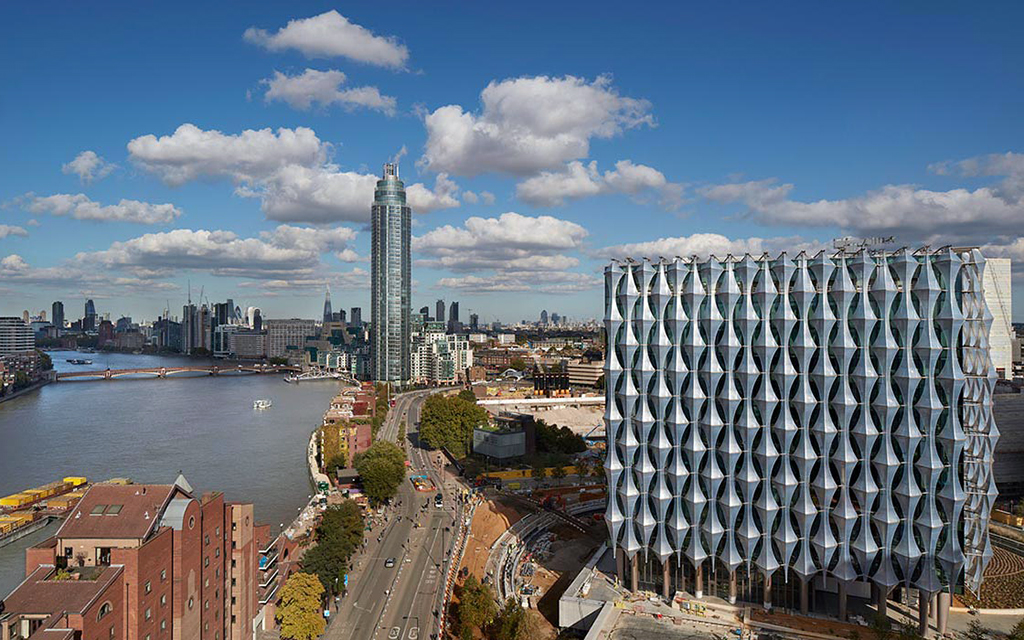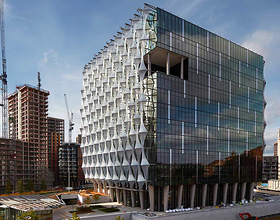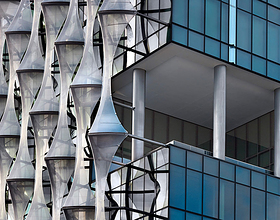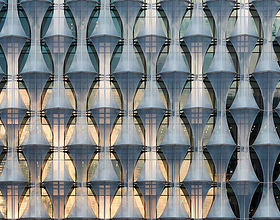US EMBASSY
-
Since 1785, when John Adams became the first ambassador to the Court of St. James's, Grosvenor Square has been home to the US embassy in London. The existing embassy building was designed by Eero Saarinen in 1960. Half a century later, it had become over-crowded and unable to meet modern-day security and workplace needs.
The State Department envisioned a new embassy that would serve as the centerpiece of one of America's longest-standing and most valued relationships. It also aspired to set a new paradigm in embassy design by representing the ideals of the American government—giving priority to transparency, openness, and equality, and drawing on the best of American architecture, engineering, technology, art, and culture.
The firm’s challenge for the Embassy was to encompass these values, creating a strong sense of welcome for the community, while also meeting specific functional requirements for security, diplomatic work, and environmental sustainability. The Nine Elms district, a South Bank industrial zone under intense redevelopment, offers a unique setting for the new embassy. With an estimated 1,000 daily visitors and 800 staff, the Embassy project is poised to establish a strong framework for the urbanization of Nine Elms. A civic plaza and park contribute to this revitalization by connecting the Thames embankment and Nine Elms Lane to a new pedestrian greenway extending from Vauxhall Station to Battersea.
The Embassy stands at the center of this burgeoning area of London, with a public park containing a pond, walkways, seating, and landscape along its edges. Curving walkways continue into the interior of the building with gardens on each floor that extend the spiraling movement upward. The internal gardens evoke American landscapes, enhancing circulation by providing alternative paths through the building and informal meeting and gathering spaces.
Many features of the Embassy serve multiple purposes to balance requirements into a cohesive and compelling whole. Water, energy and materials are managed with integrated building systems that work together and enhance each other. For instance, the pond is both a landmark and a component of the site's stormwater strategy, reducing the strain on municipal sewer systems while providing a source for landscape irrigation.
The Embassy's form is that of a transparent crystalline cube set atop a monumental colonnade—a radiant beacon at the heart of Nine Elms. Its high-performance facade is made of laminated glazing and an outer envelope of ethylene tetrafluoroethylene (ETFE), a transparent film shaped to minimize solar gain and glare, affording generous natural light throughout the interior and access to the site's striking views. The tonality of the envelope shifts with the weather and time of day.
The Embassy's design represents a holistic fusion of urbanism, building, and landscape. It is both evocative and performative, helping to define a new environment for diplomacy while mapping a passage toward a new diplomacy of the environment.
Photo credits: KieranTimberlake
1870 Projects










